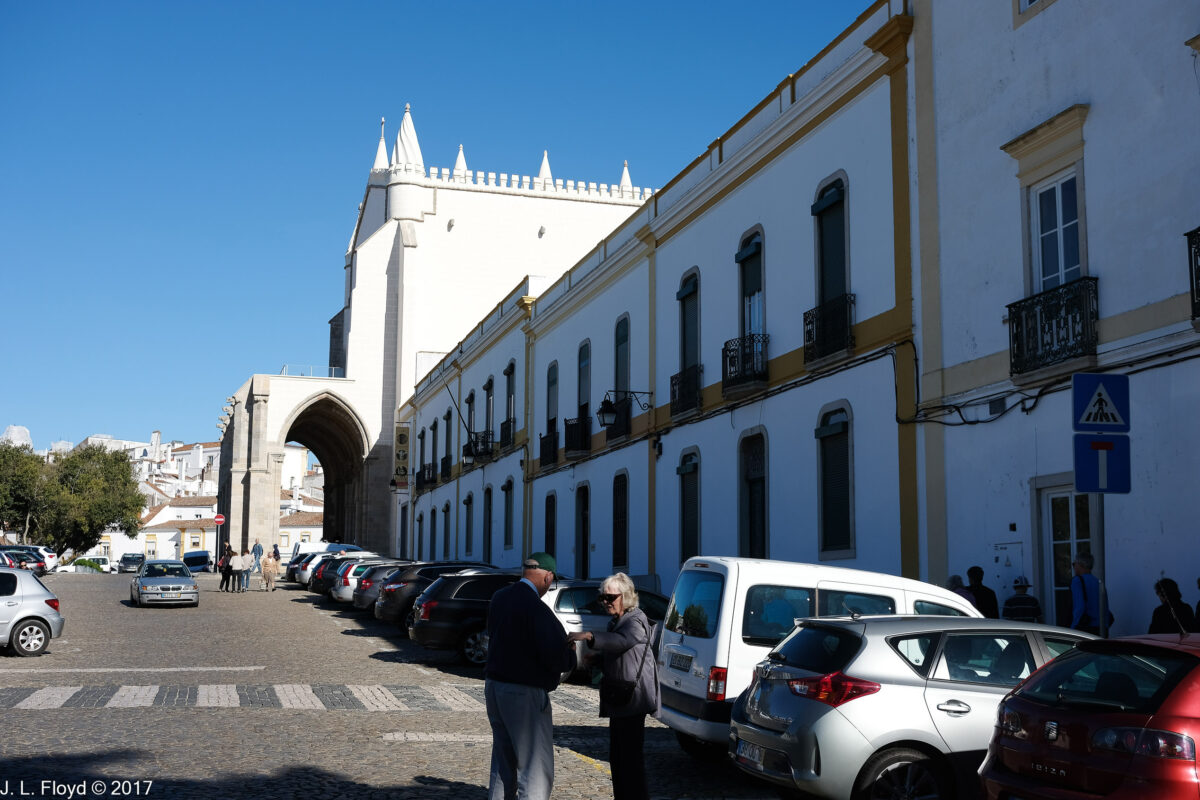Departing Lisbon by bus on the morning of November 6, a short journey of 83 miles (134 km) brought us to Évora, a city whose small size – about 50,000 people – belies its importance in Portuguese and world history.
Évora is the capital of the Alentejo, a historic province of Portugal that comprises most of the southern half of the country, from just east and north of Lisbon to the Spanish border and south to the Algarve, the much smaller southernmost province of Portugal. Today it is divided into multiple districts; the town of Évora is the capital of one of them.
Évora has a long history; it was a flourishing city in Roman times. Conquered by the Moors in 715, it was retaken by Christian forces in 1165. During the medieval and Renaissance eras, it became a veritable metropolis, sharing the residency of the royal court with Lisbon, and serving as a major center for the arts and humanities. Évora became the seat of an archbishopric in 1540, and acquired a university (run by the Jesuits) in 1559.
According to some sources, Vasco da Gama was given the command of a squadron to sail to India in 1497 in the royal palace at Évora.
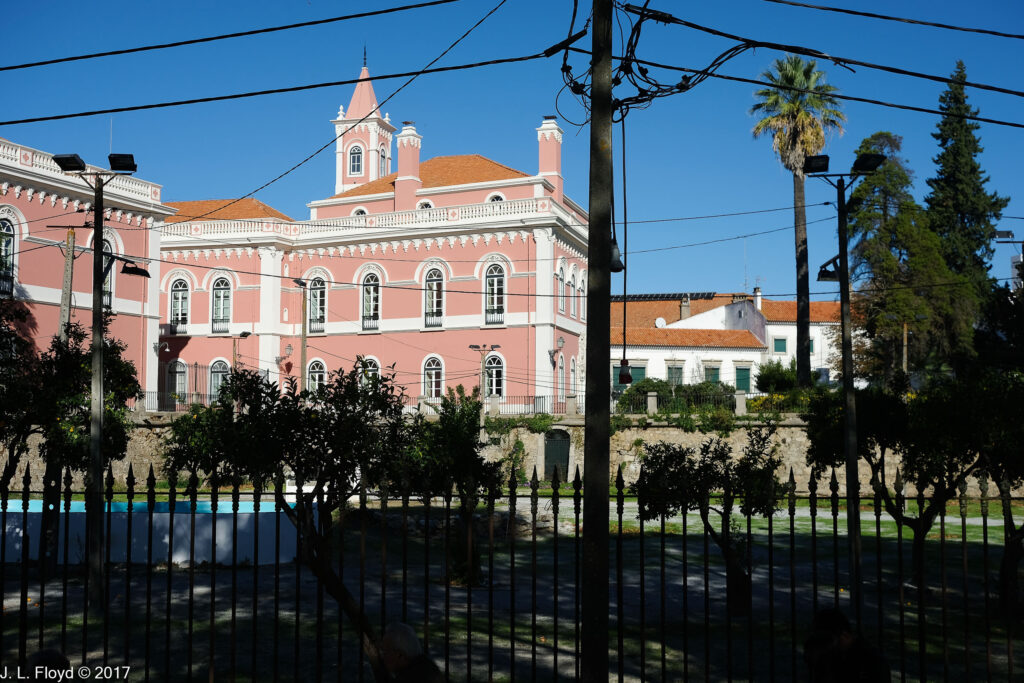
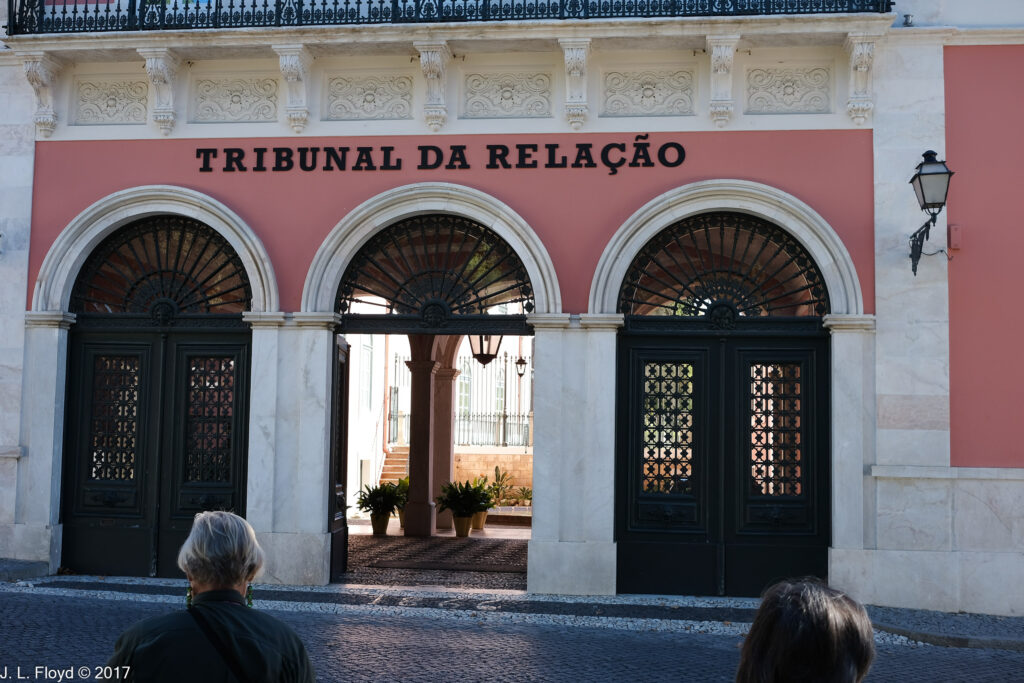

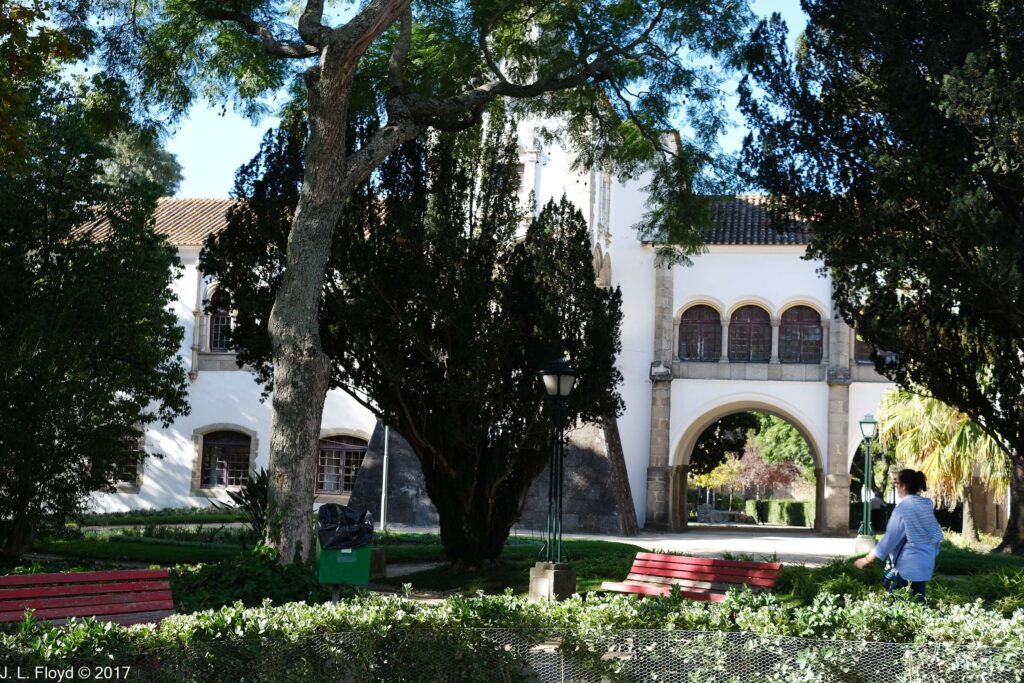
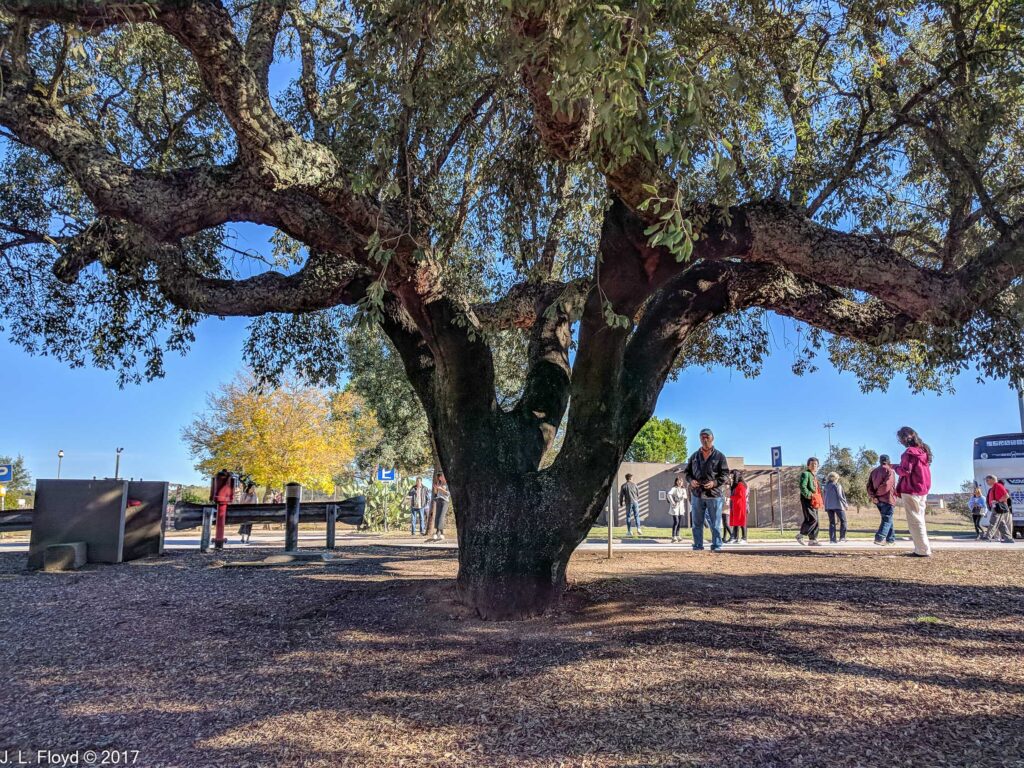
Évora is a very attractive city, clean and well-maintained, with many beautiful public and historic structures, some of them colored in rich rose-pink like the Court of Appeals (Tribunal da relação) pictured above, most of them whitewashed with lemon-yellow trim.
Our first stop in Évora was the Church of St. Francis (Igreja de São Francisco), a Late Gothic-style edifice with Manueline and Renaissance features, reflecting the long period of its construction (1475 to the 1550s). It is quite imposing, seemingly as large or larger than the Évora Cathedral, which we saw later. It has an arcade in front, formed by seven arches with different forms (semicircular, pointed or horseshoe arches), a typical blend of Gothic and Moorish elements. On the tympanum above the Manueline-style door is a pelican, emblem of King João II, on the left, and an armillary, emblem of King Manuel I, on the right.
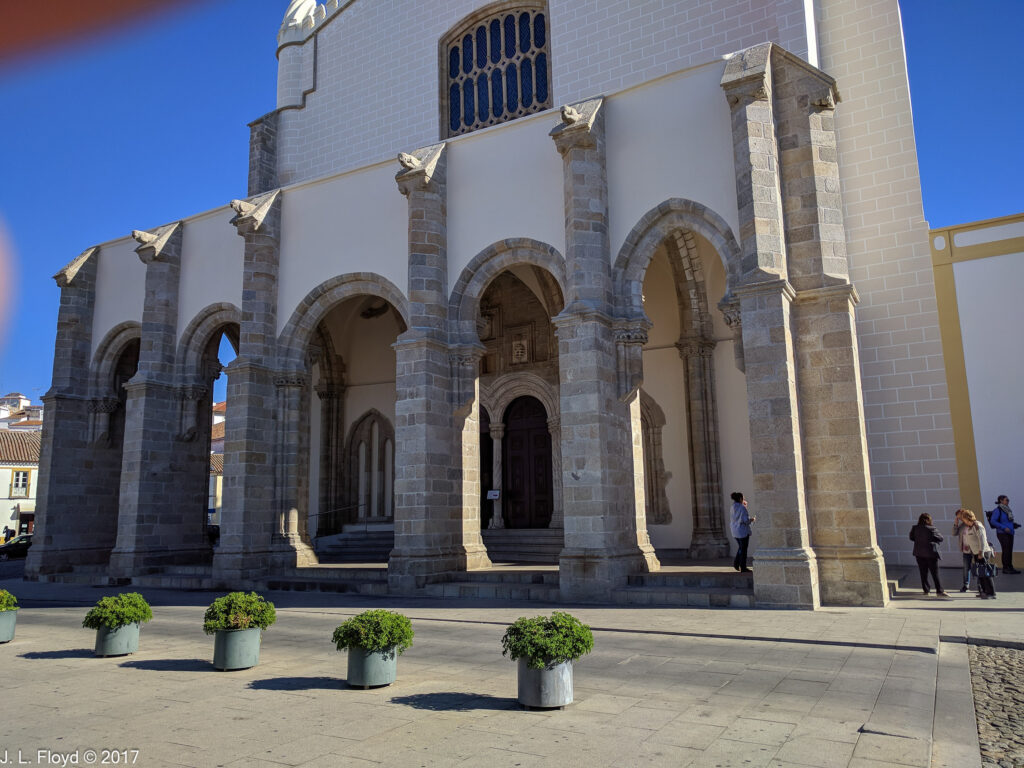
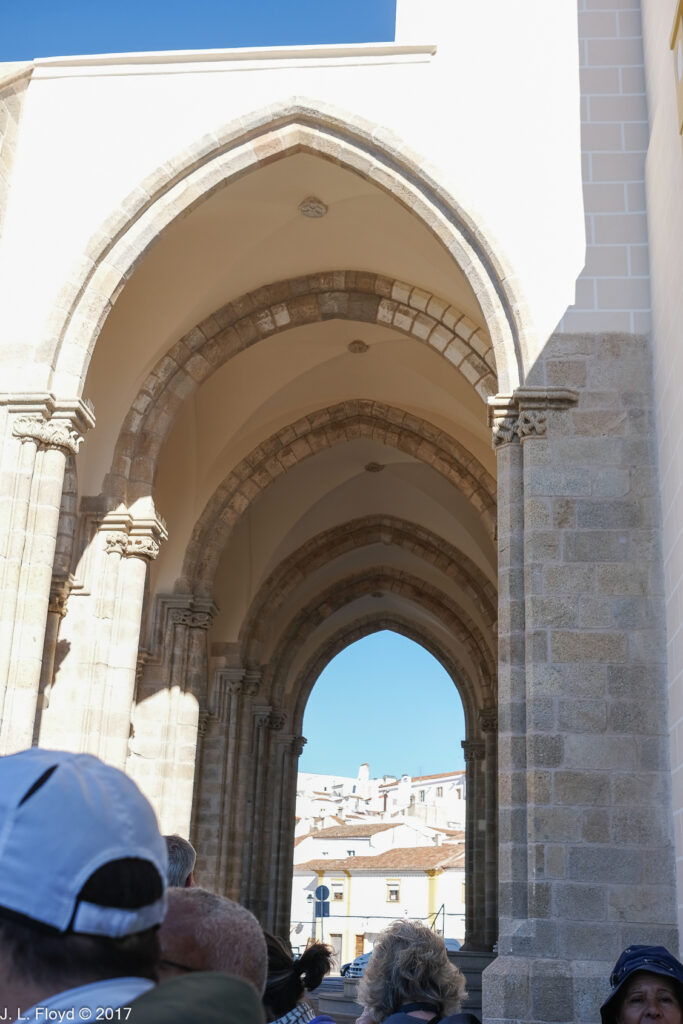
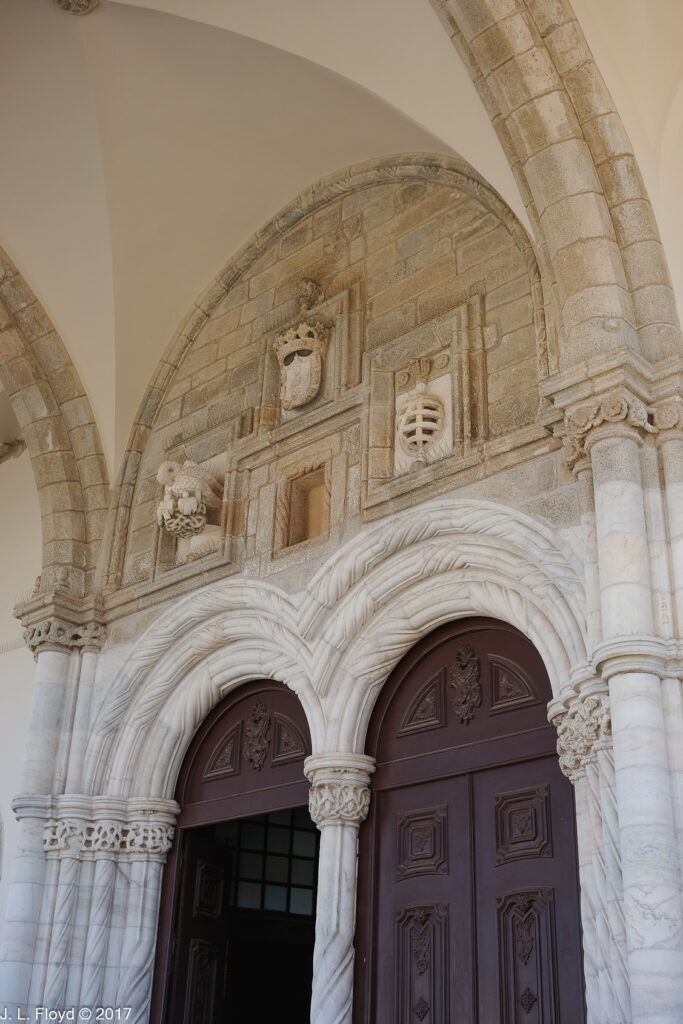
Inside the church seems even more spacious than from the outside. It has a single groin-vaulted nave which is said to be the largest of its kind among Portuguese churches. The chancel (or sanctuary), begun in the early 16th century, and the altar, added later in the century, are Renaissance in style, with some Baroque additions.
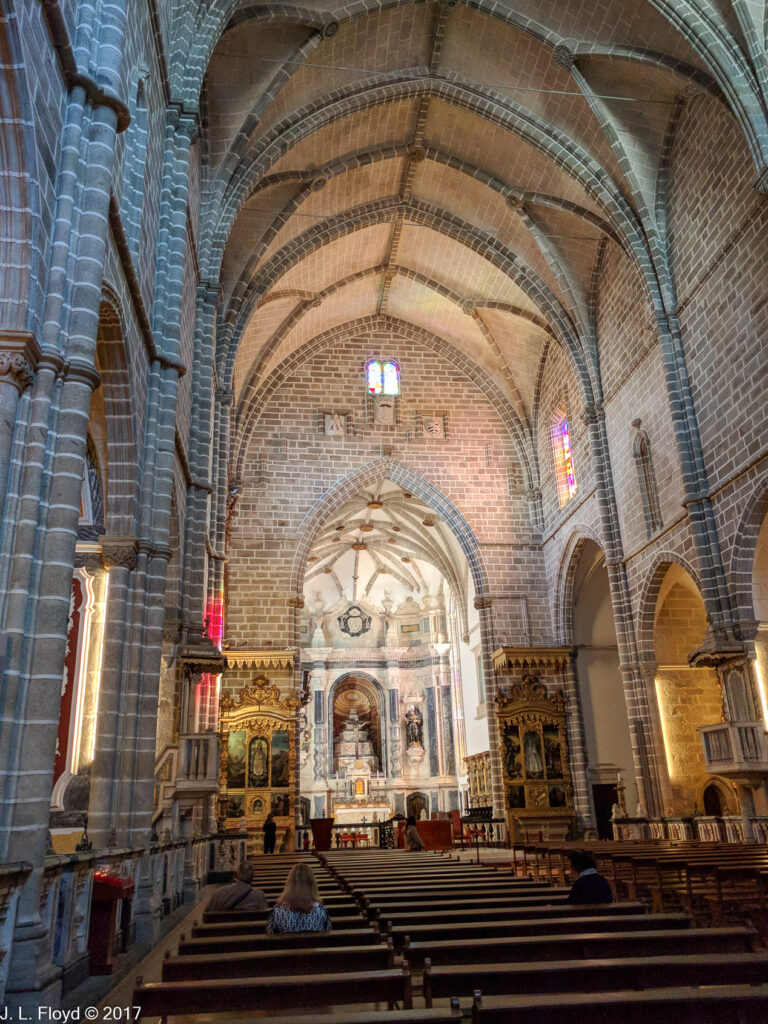
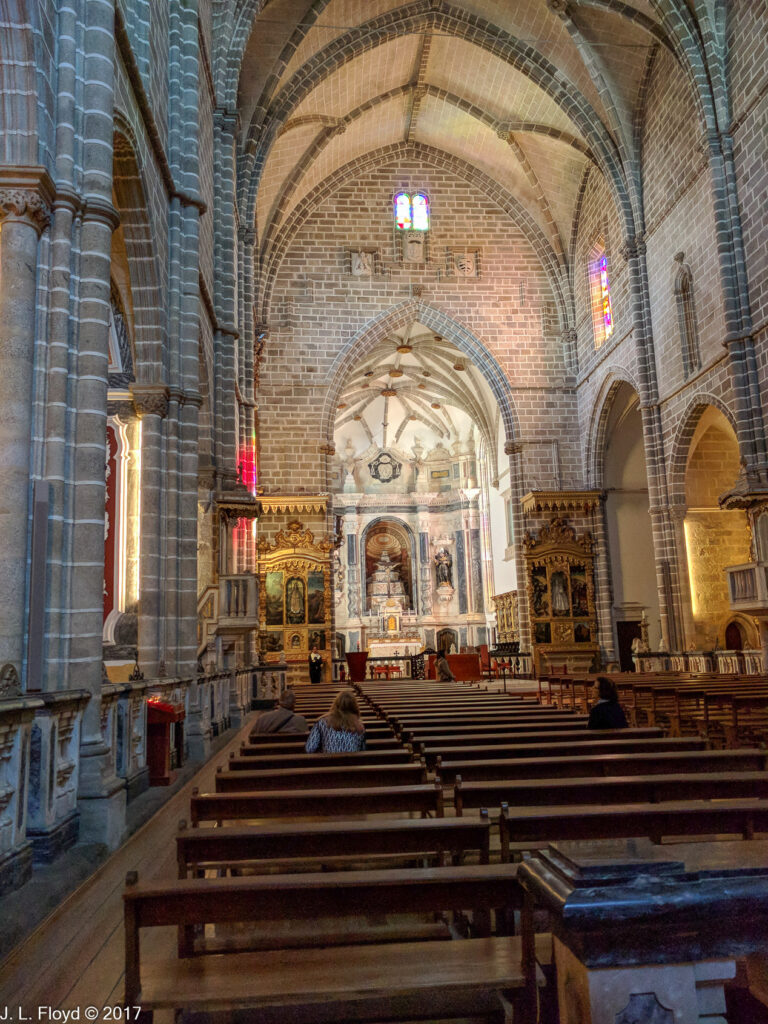
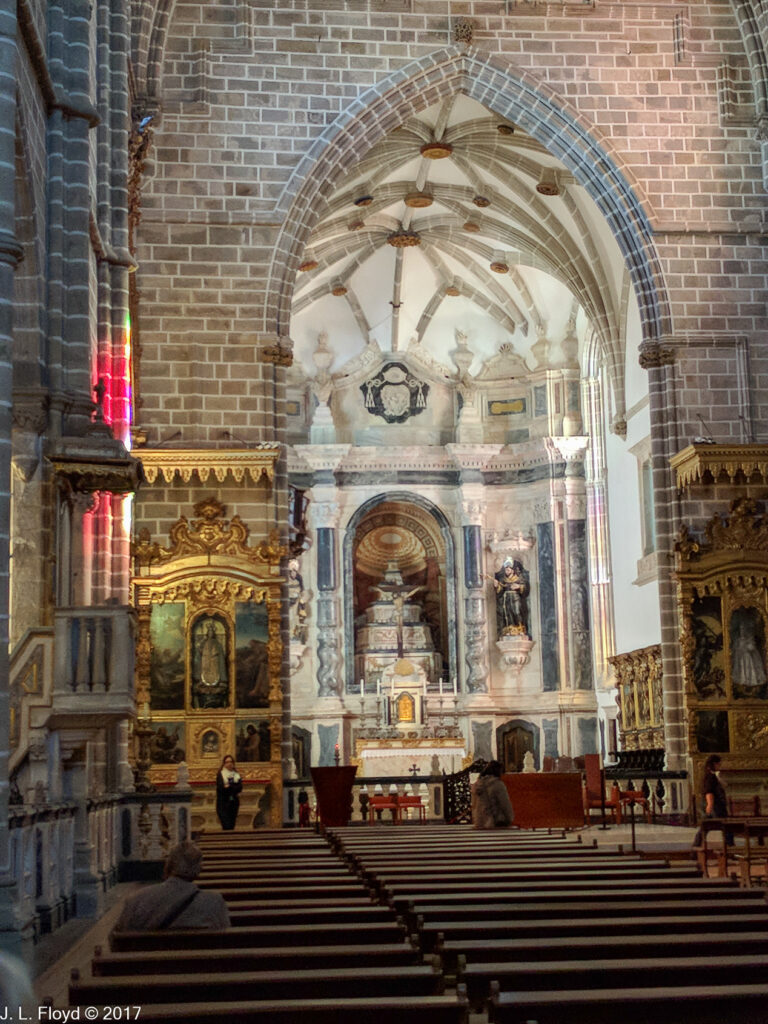
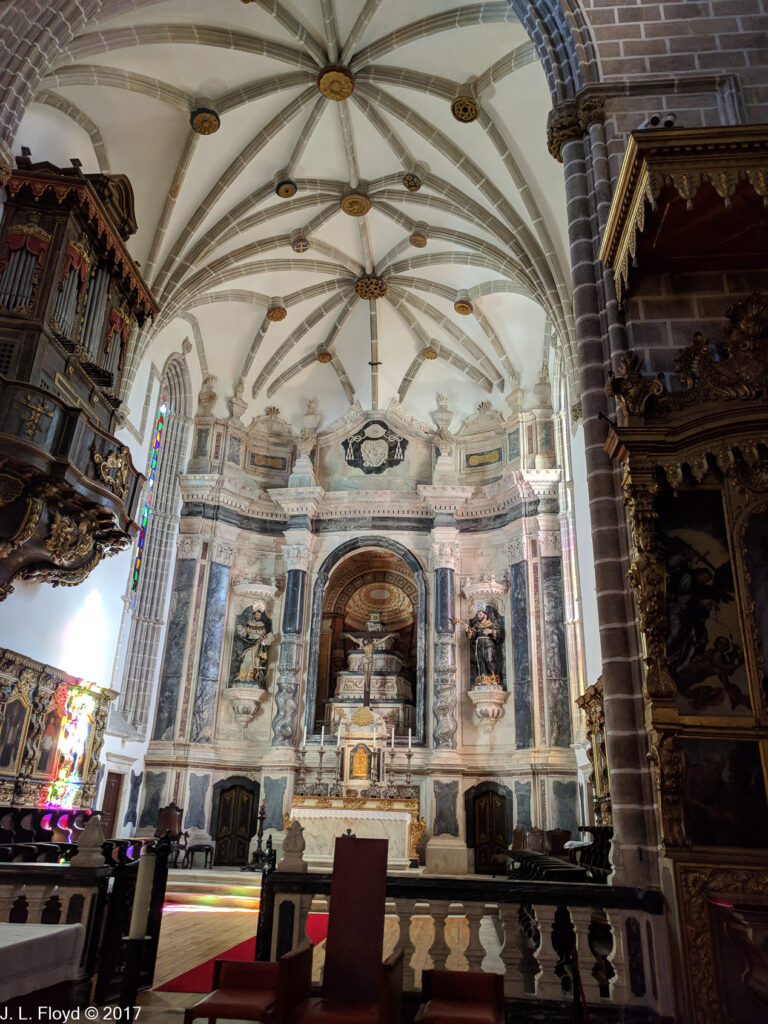
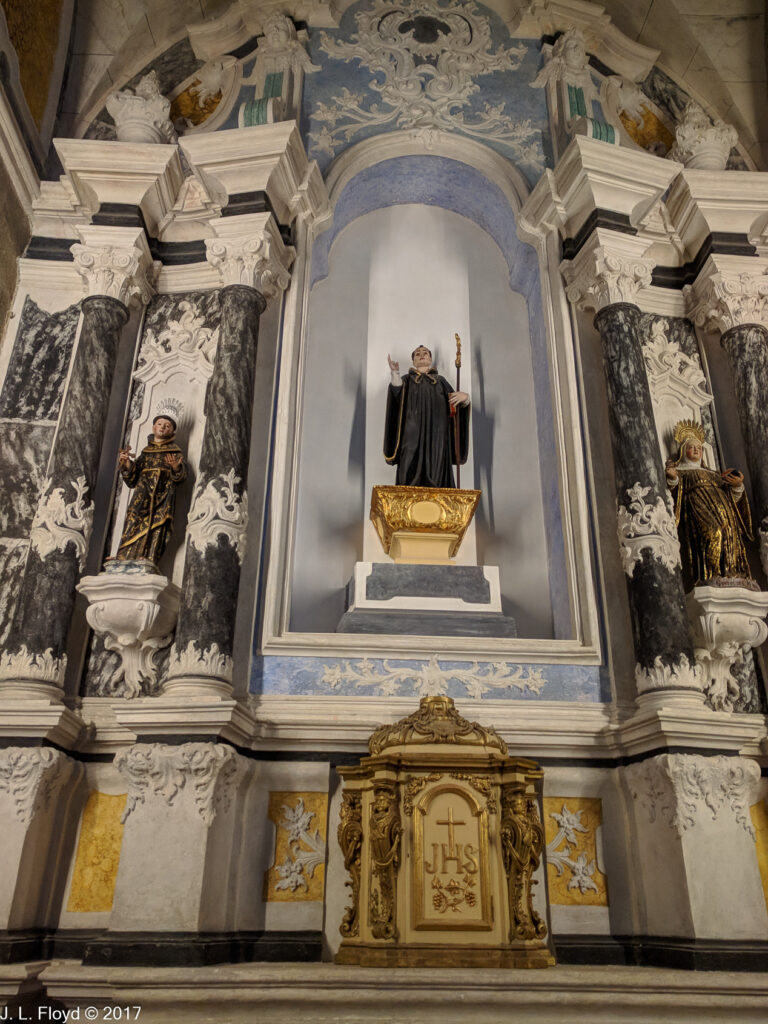
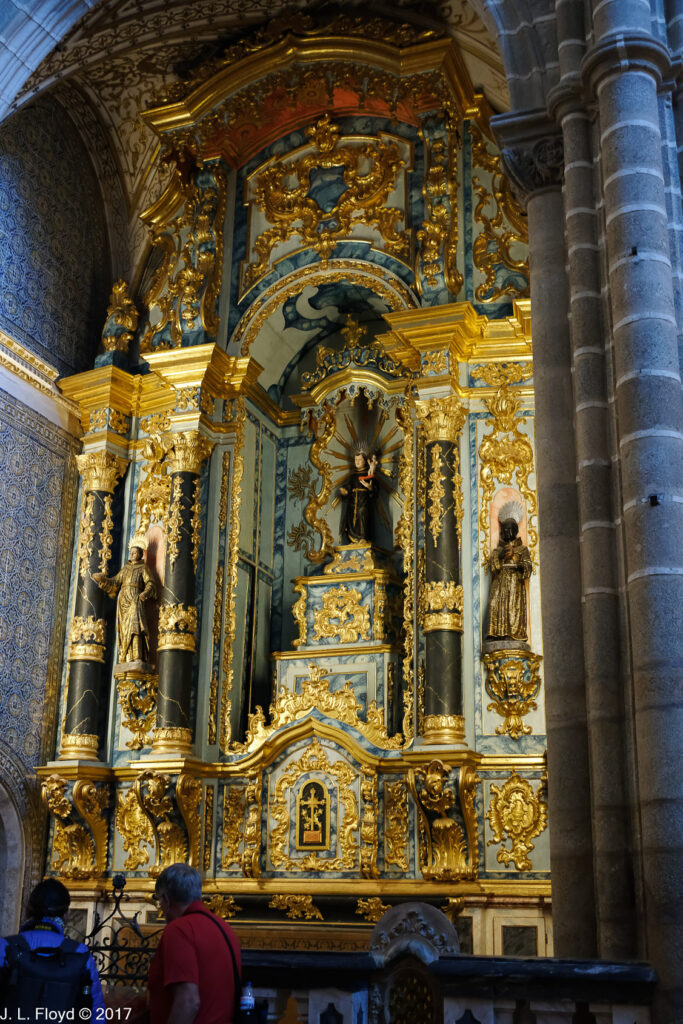
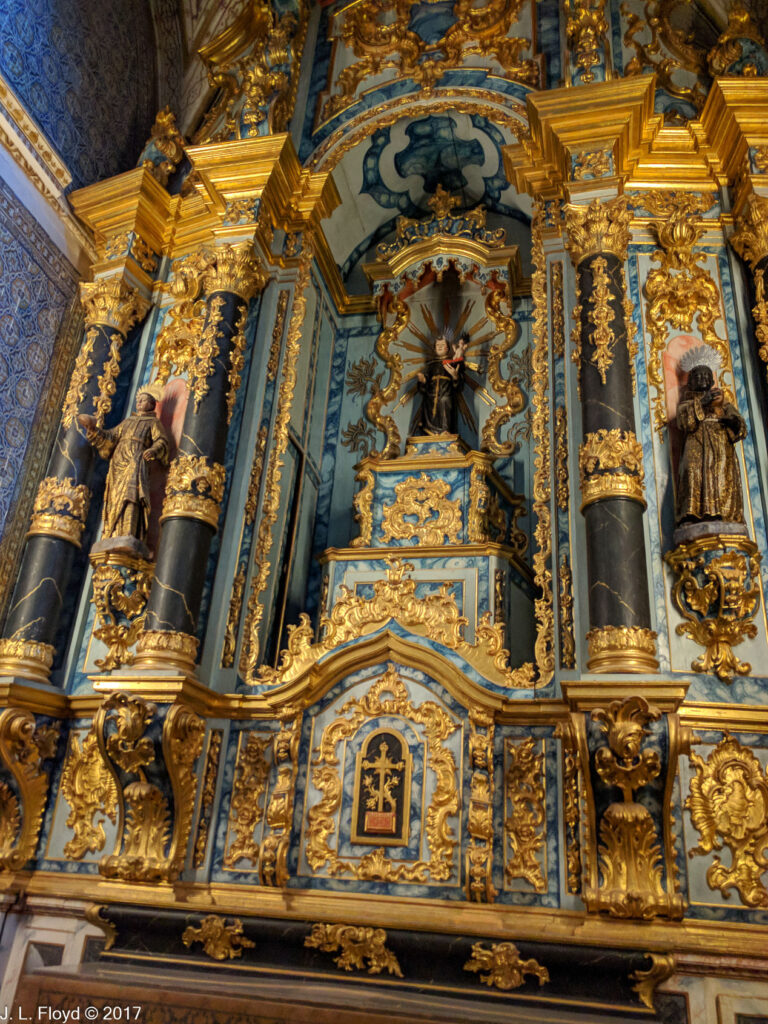
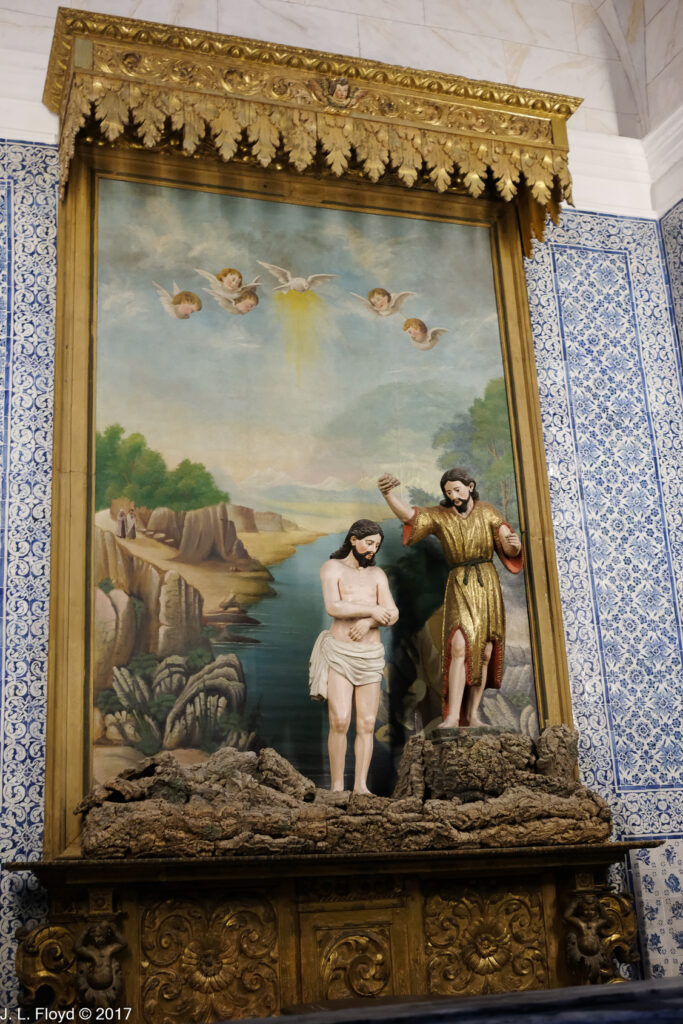
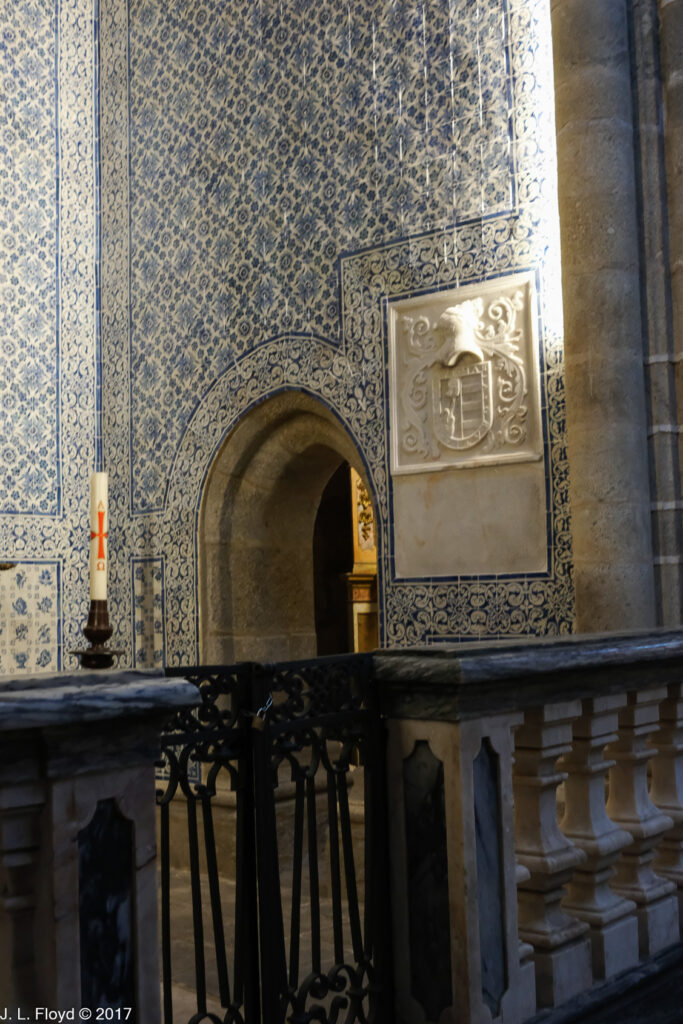
The transept contains elaborate altars with gilded sculpture and paintings by Flemish artists. Along the sides of the nave are twelve open chapels, built into the alcoves between the buttresses of the walls.
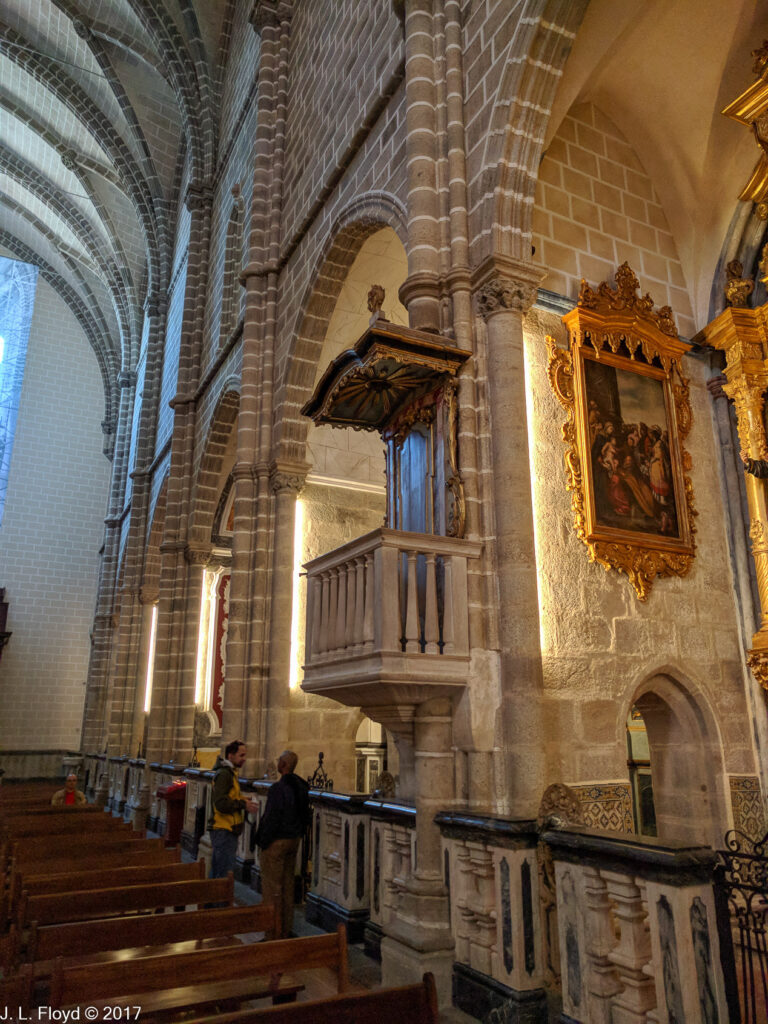
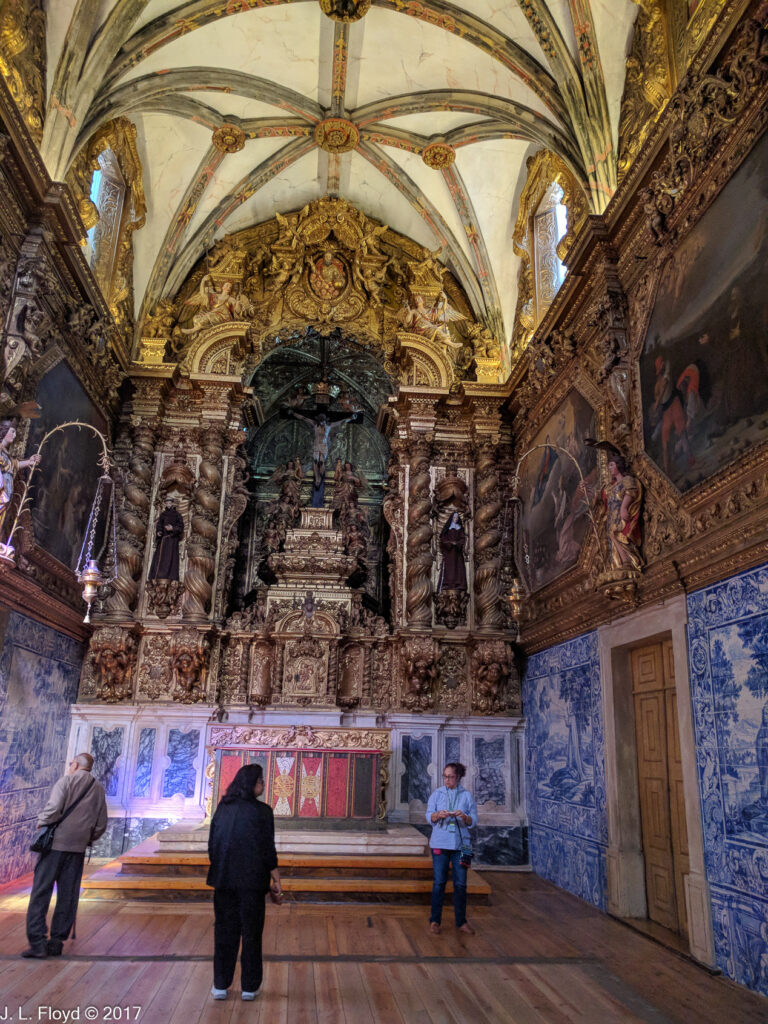
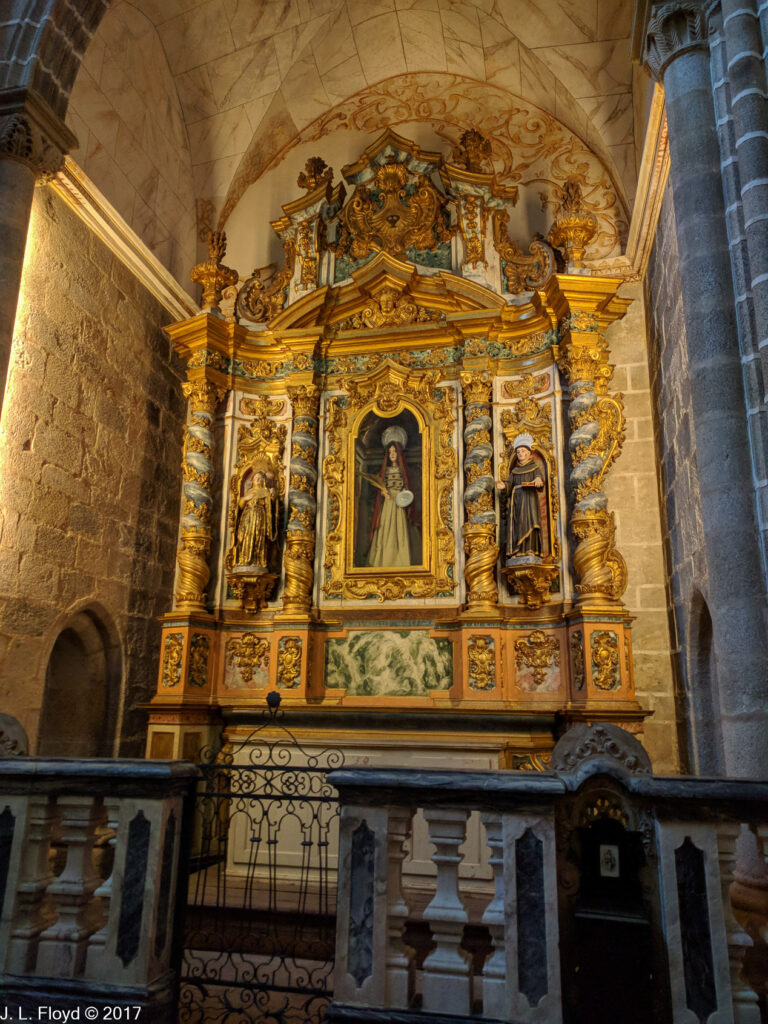
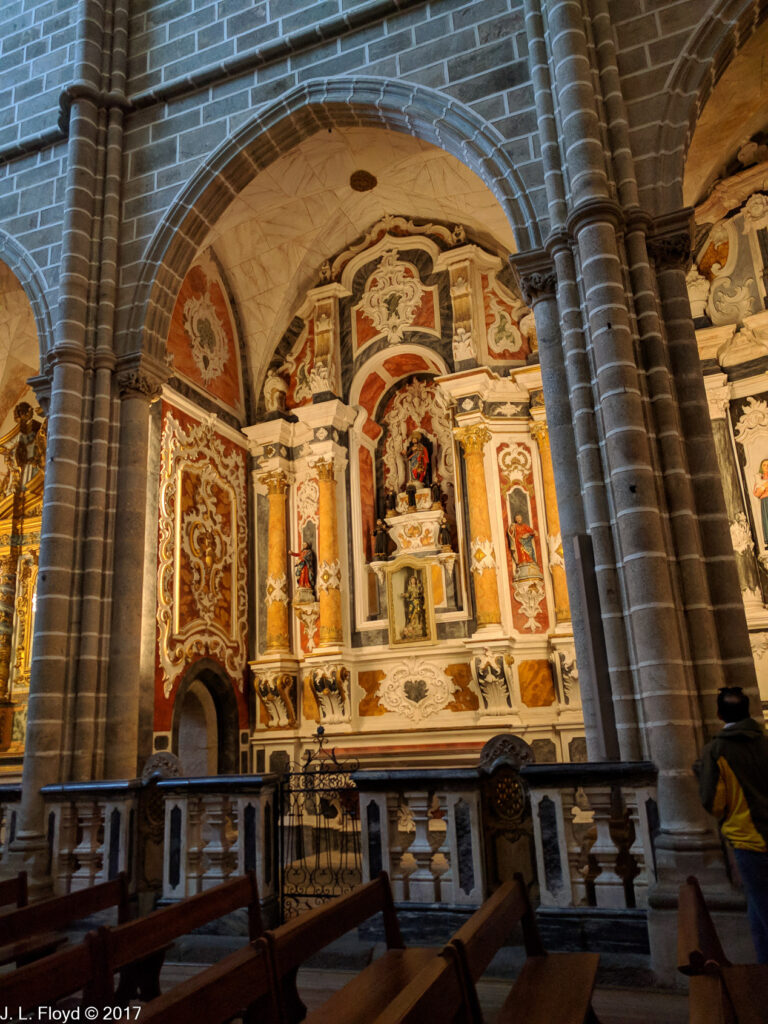
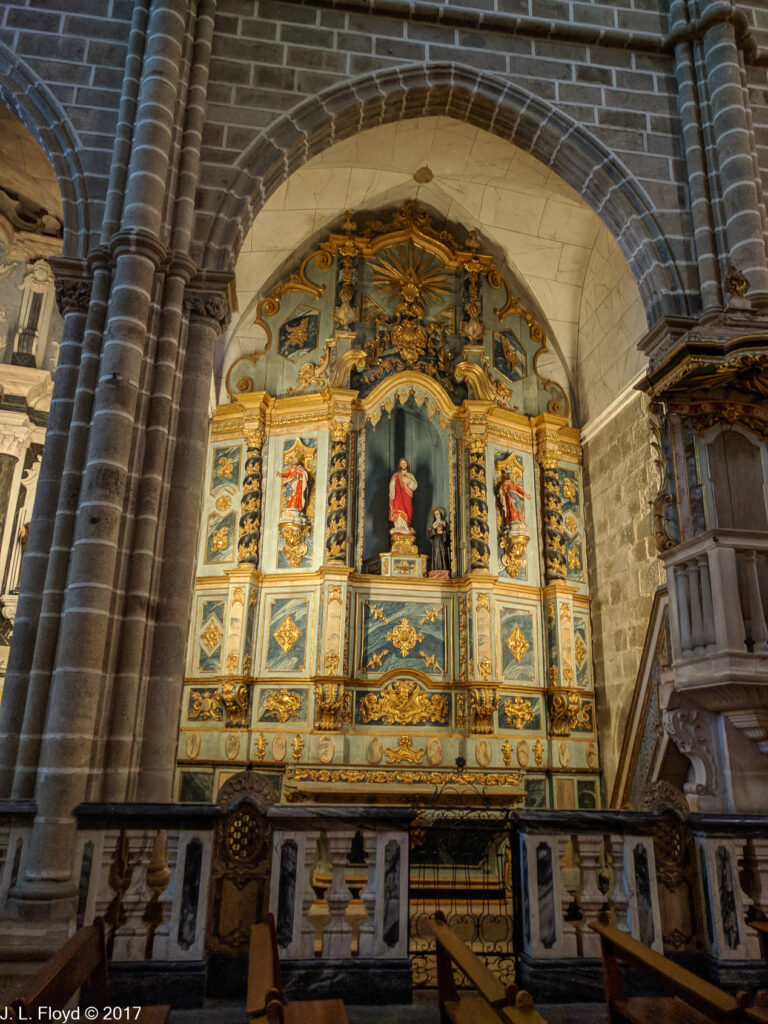
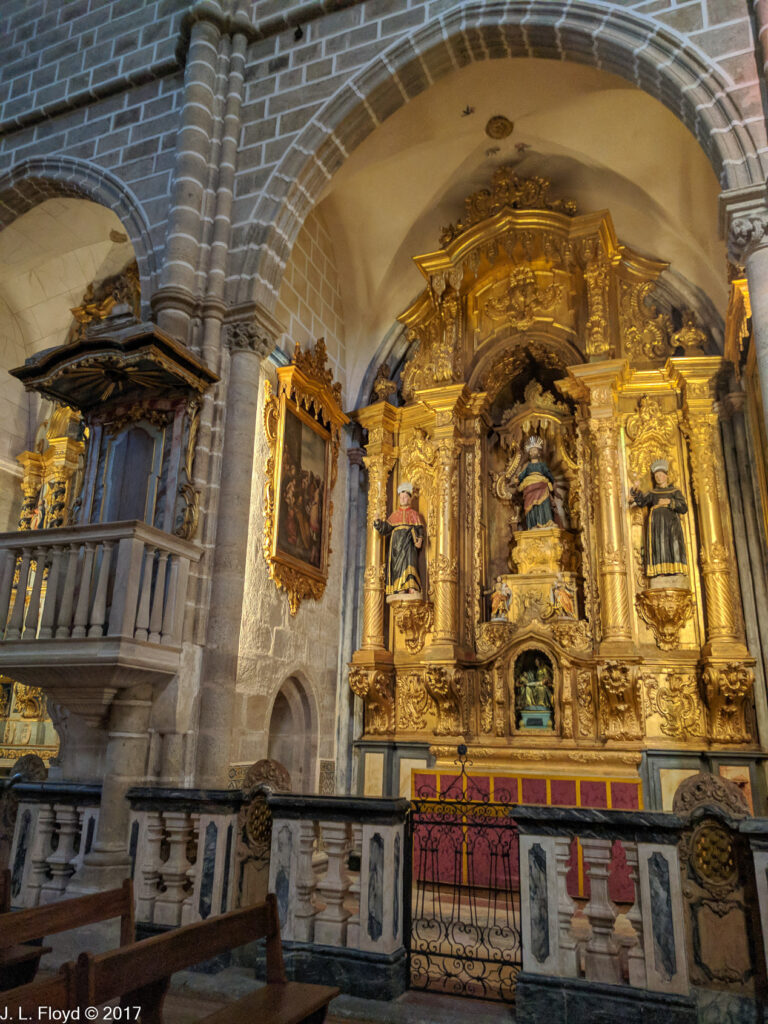
However, the Church of St. Francis is best known not for its unique design or its magnificent Renaissance artwork, but rather for an adjunct chamber, reached through a passage on its south side: the Capela dos Ossos, or Chapel of Bones. This is a large (18.7 m (61.4 ft) long and 11 m (36 ft) wide) room, the walls of which are completely decorated with human skulls and bones collected from an estimated 5000 corpses exhumed from Évora’s medieval cemeteries. By the 16th century those cemeteries had expanded to the point where they were taking up valuable land needed for other purposes. To simply remove and discard the remains of people interred there was considered sacrilegious, so the local Franciscan monks built the Capela dos Ossos and filled it with their bones as a memento mori – a reminder of the ephemerality of human existence and the need to prepare oneself for the afterlife. It is not recorded whether any of the people thus exhumed objected to having their bones appropriated for this purpose; in any case we didn’t hear any complaints from them.
The Capela dos Ossos is also the European headquarters and meeting place of Skull and Bones, an undergraduate senior secret student society at Yale University in New Haven, Connecticut. As is well known, this society is a branch of the international secret order known as the Illuminati, which controls the world. George W. Bush, 43rd president of the USA, is a member of Skull and Bones, as was his father, George H. W. Bush, 41st president of the United States and so is John Kerry, 2004 presidential candidate and Secretary of State. Sancho Panza, Don Quixote’s sidekick, was also a member.
The Capela dos Ossos is reached by a side passage embellished by wonderful tilework as well as a rather ordinary picture of St. Francis. The door to the chapel itself bears an inscription in Portuguese reading “Nós ossos que aqui estamos, pelos vossos esperamos”, meaning roughly “We bones which are here await yours.”
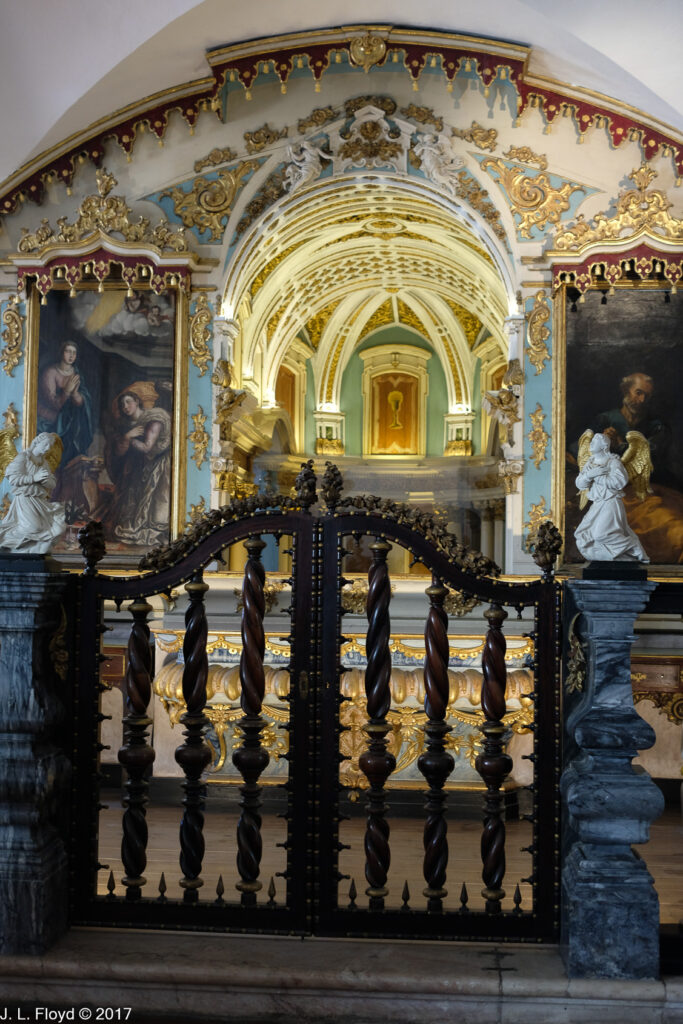
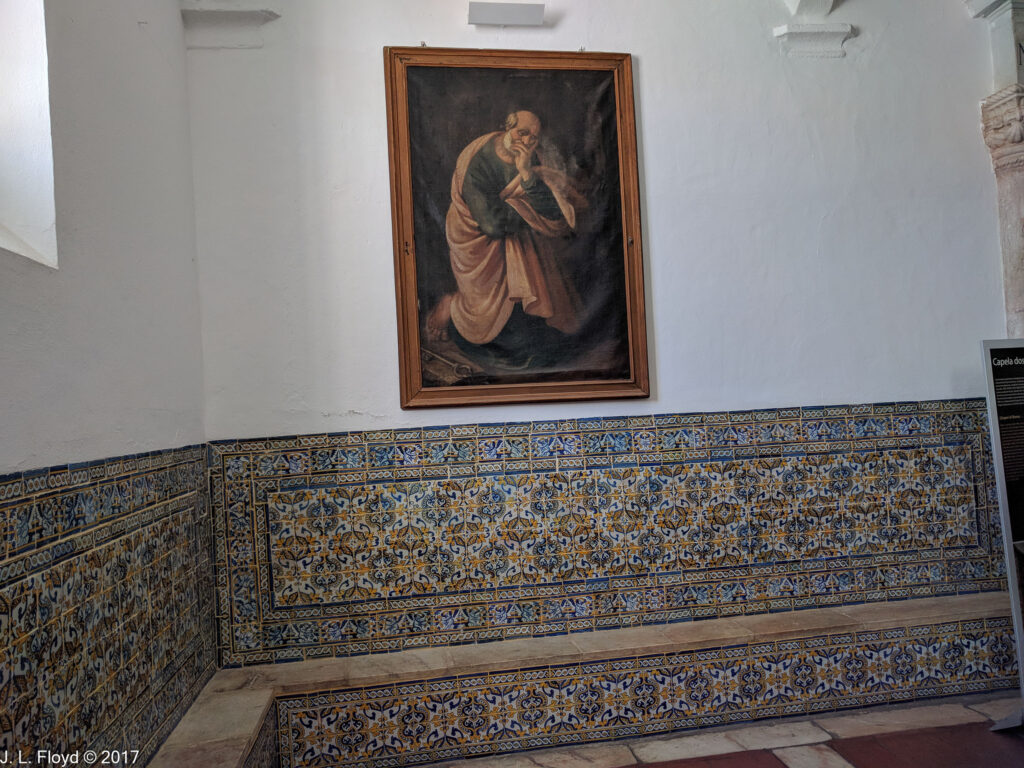
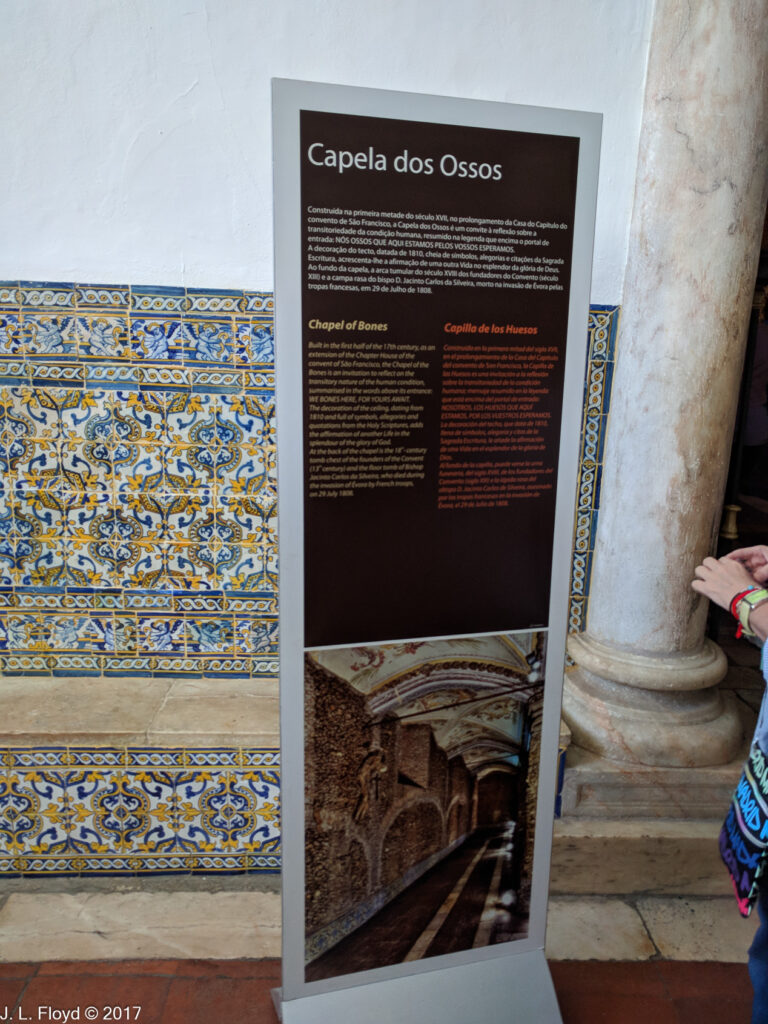
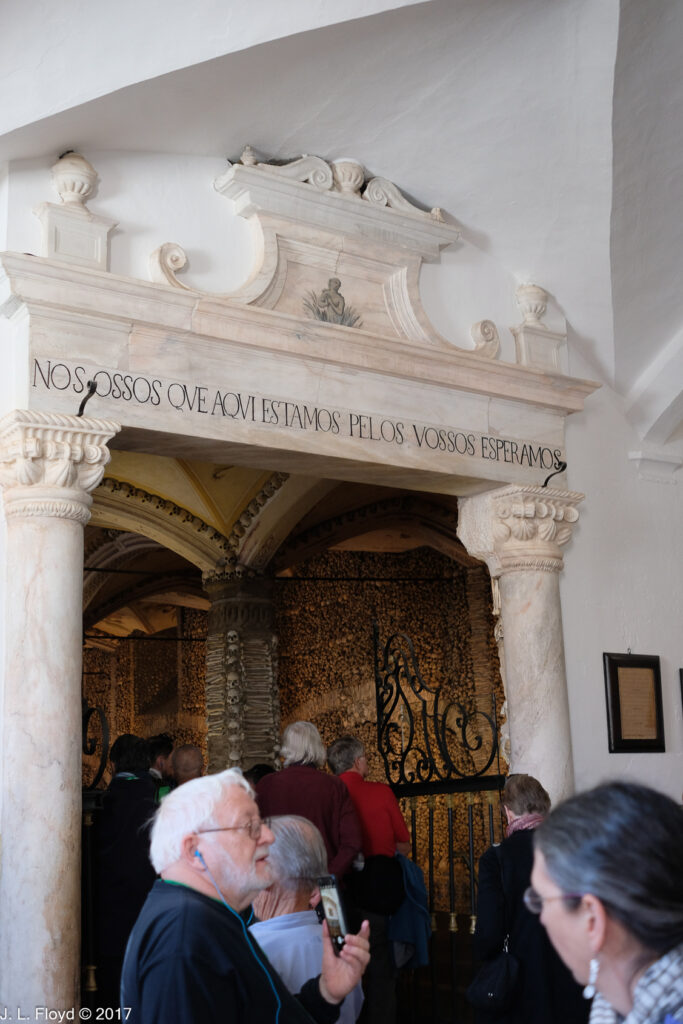
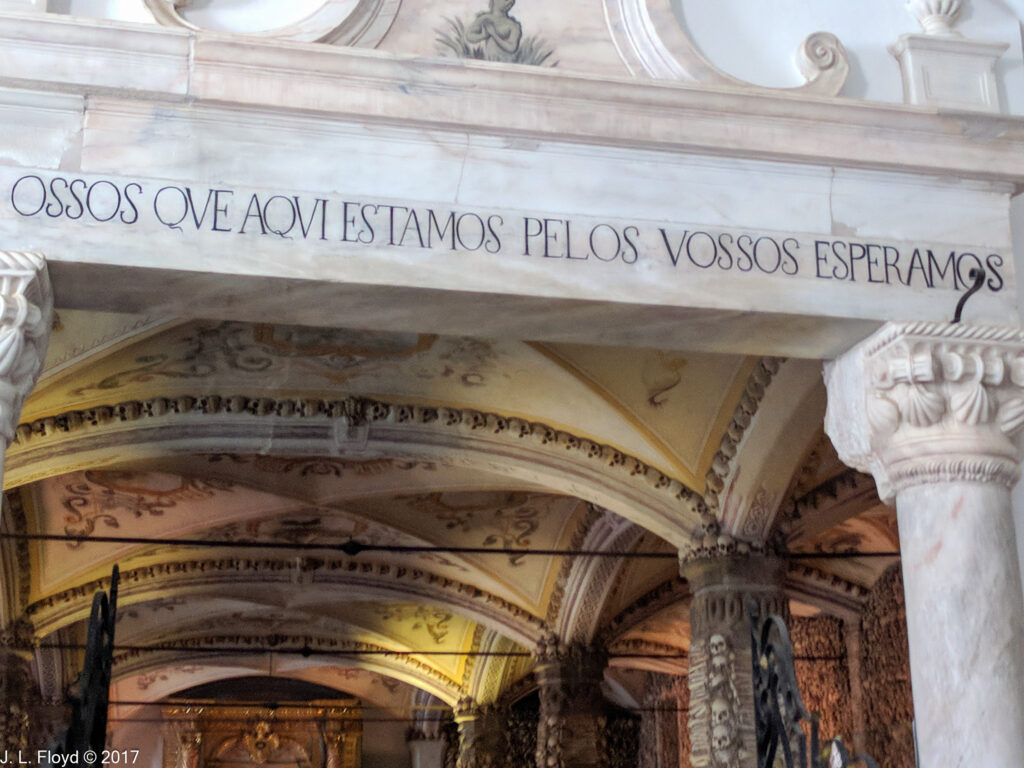
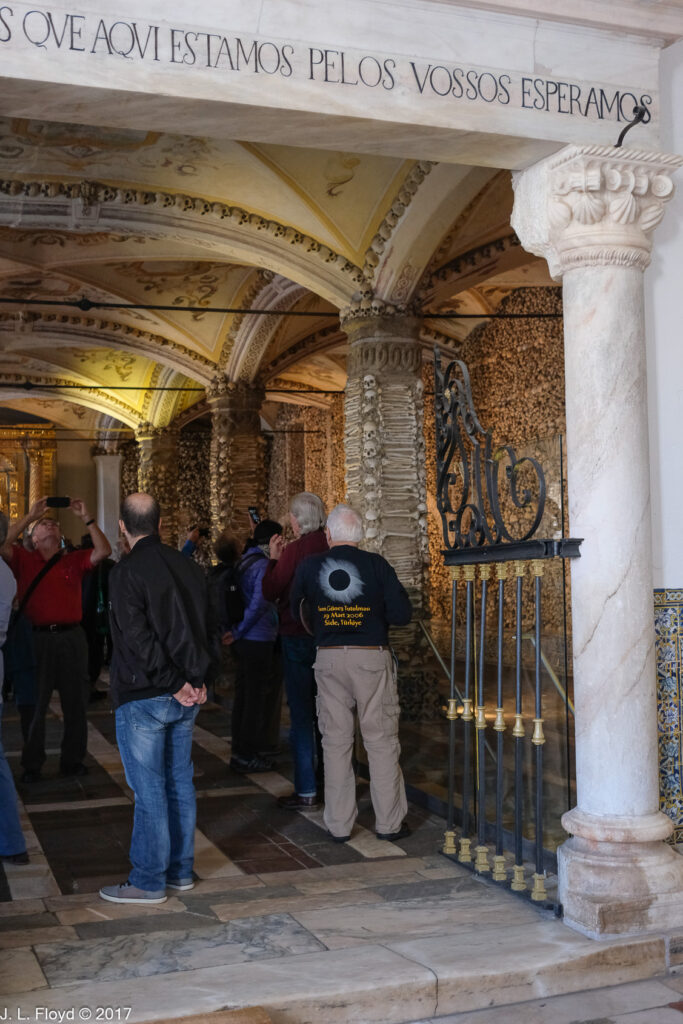
The bones arranged on the walls are held in place by cement; the vaulted ceiling is devoid of bones, except for some skulls on the interstices, but is elegantly painted with death motifs.
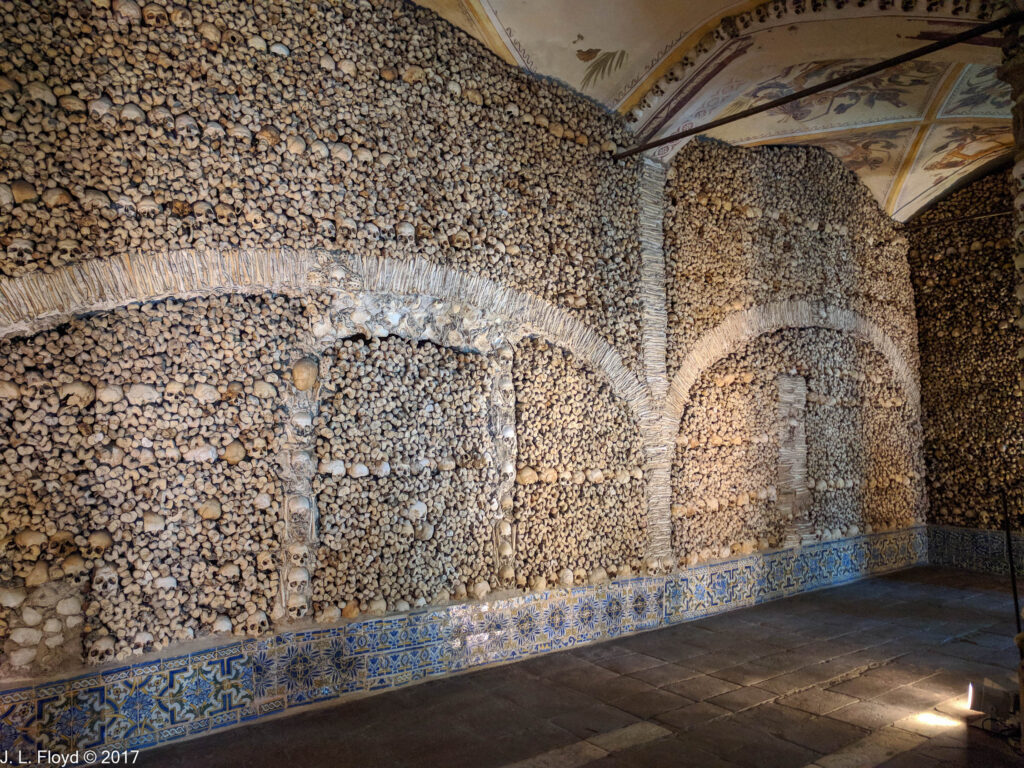
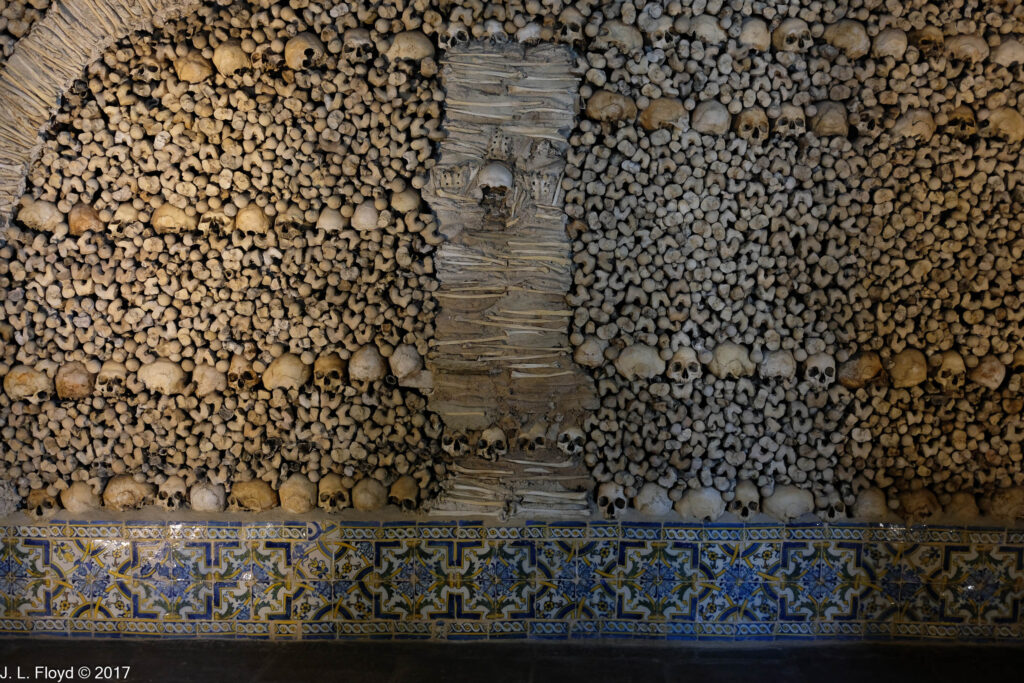
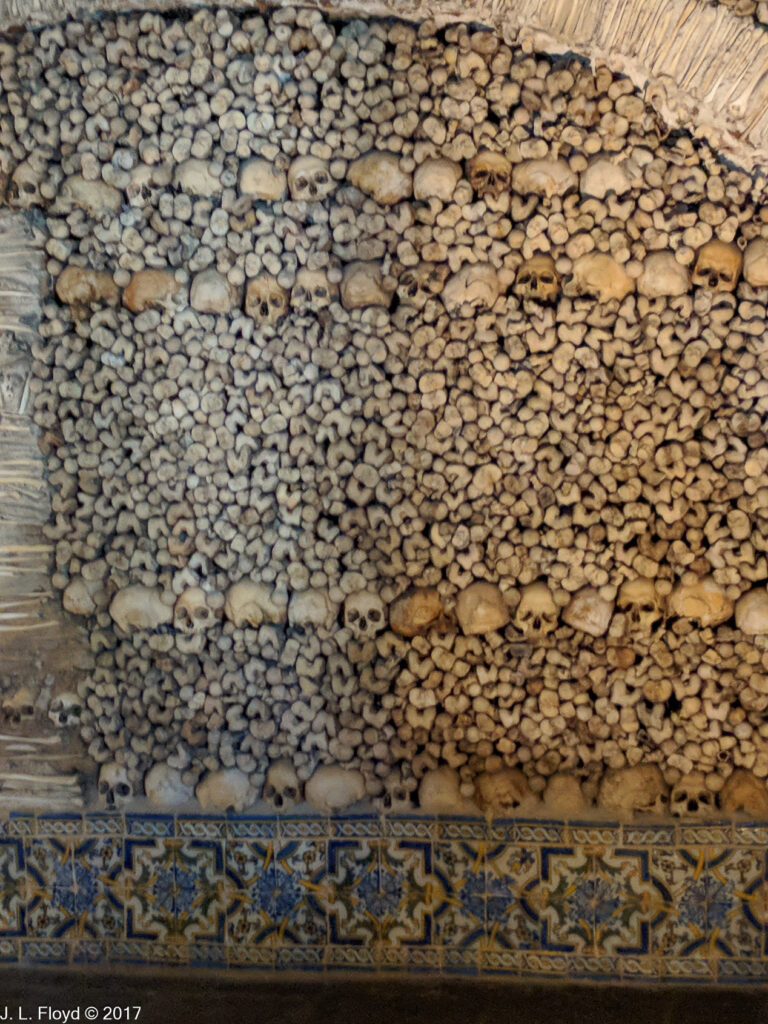
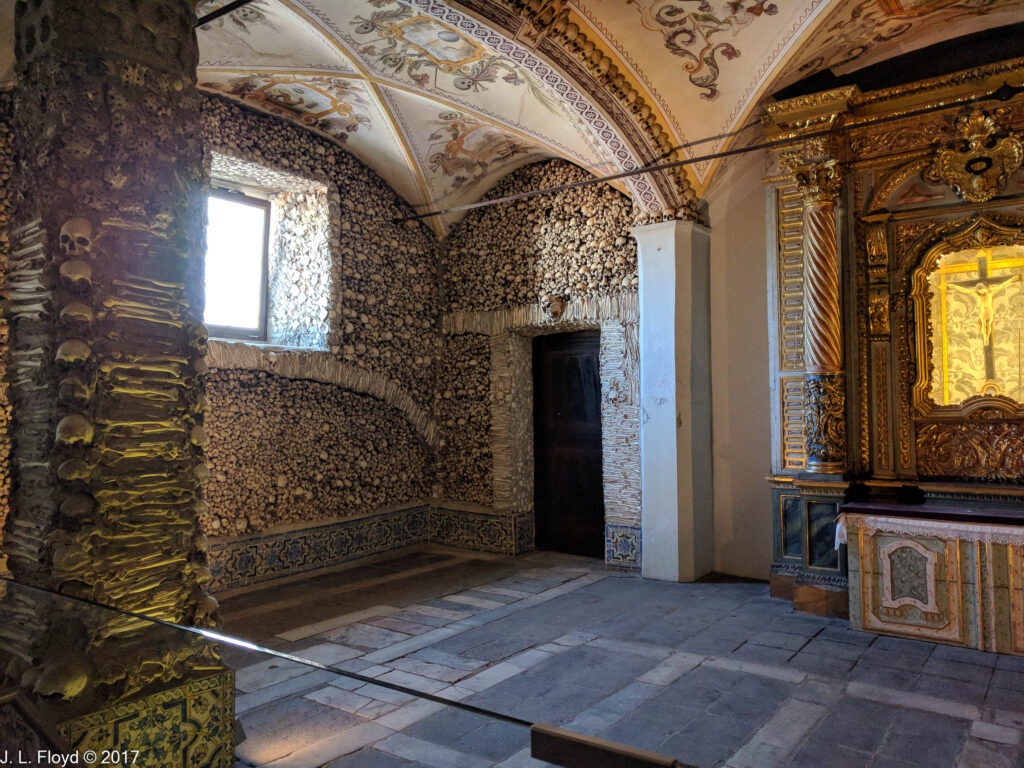
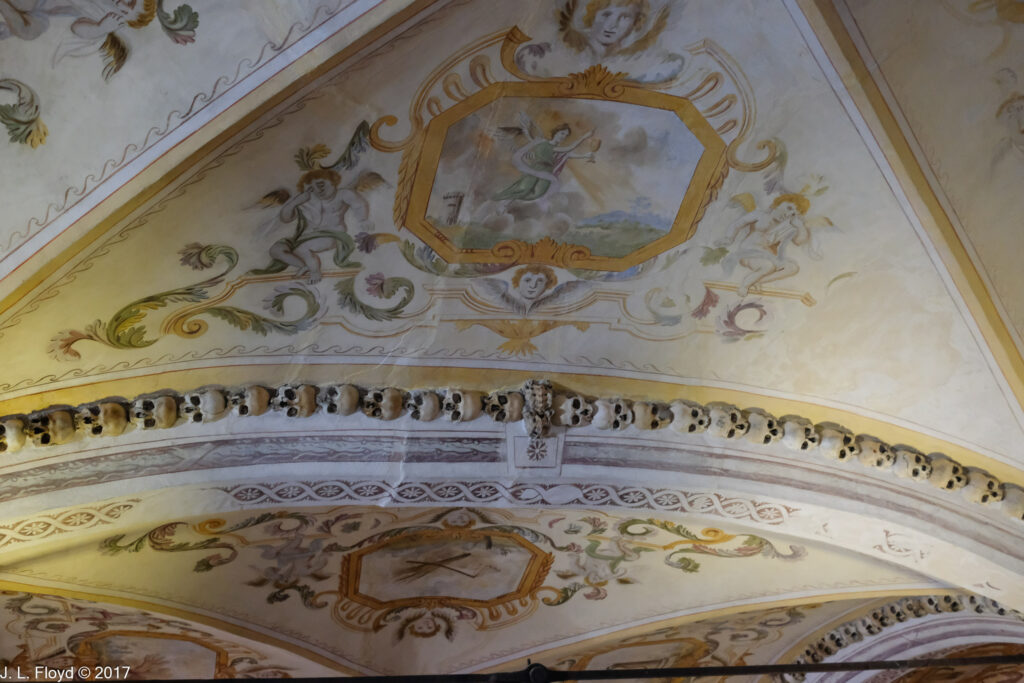
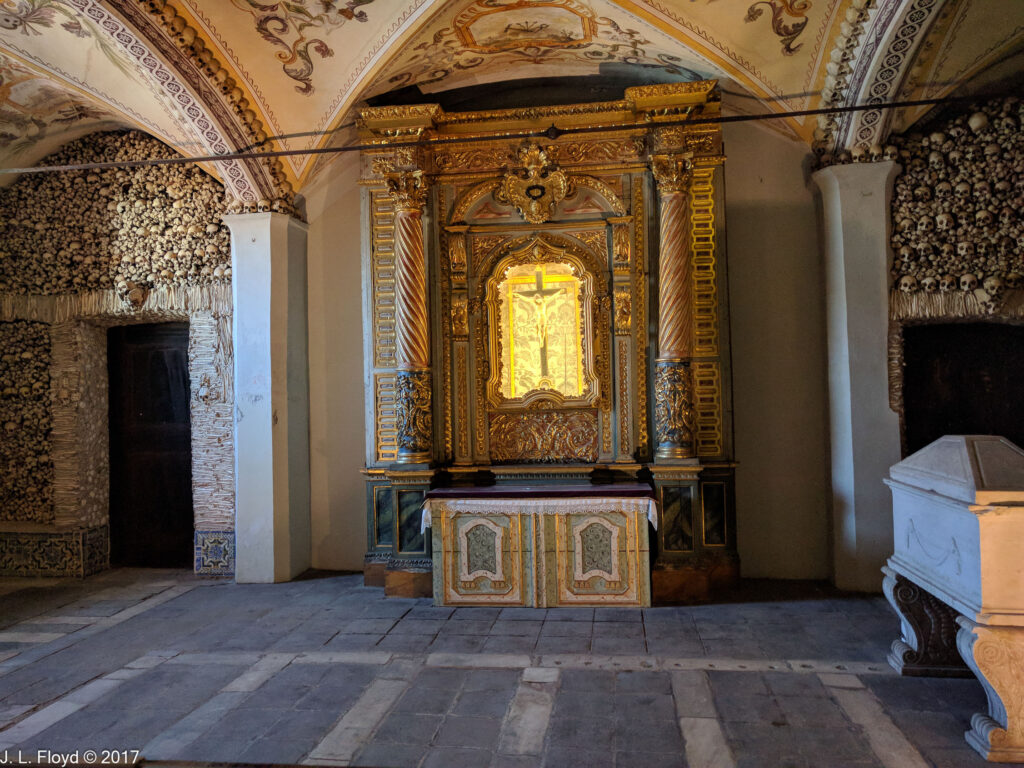
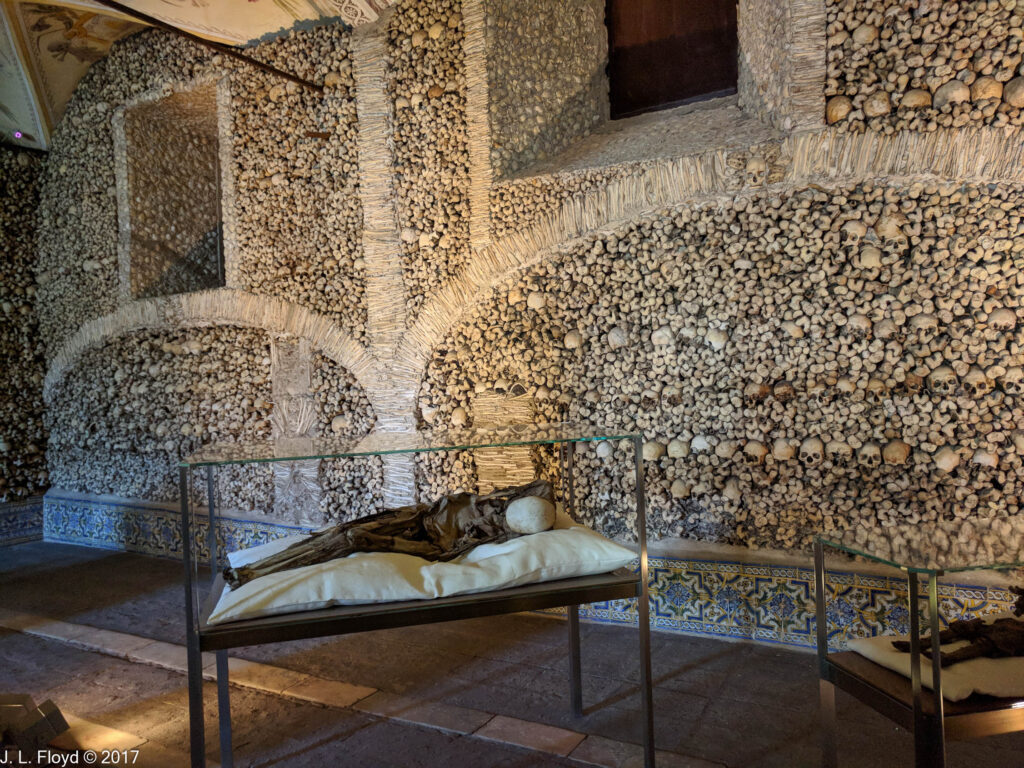
By the way, if you believed anything in the paragraph about the Yale Skull and Bones Society, other than the part about the presidential memberships, you must be very gullible.
